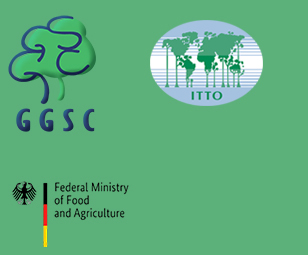
Malaysia
Malaysia’s construction sector posts RM43.9b in Q2 2025, up 12.9%
Malaysia’s construction sector maintained steady growth of 12.9 per cent, with the value of work done reaching RM43.9 billion in the second quarter of 2025 (2Q 2025), following a 16.6 per cent increase in the previous quarter, according to the Department of Statistics Malaysia (DOSM).
Chief statistician Datuk Seri Dr Mohd Uzir Mahidin said the growth was driven by continued expansion in the special trade activities and non-residential buildings sub-sectors, which posted substantial double-digit growth of 22.2 per cent and 16.2 per cent respectively.
The residential buildings sub-sector also contributed significantly, expanding by 13.9 per cent, while the civil engineering sub-sector maintained a positive trend with a growth of 7.5 per cent. The value of work done for non-residential buildings and residential buildings sub-sectors accounted for RM12.4 billion (28.2 per cent) and RM10 billion (22.8 per cent) respectively.
On the states’ performance, nearly 61.1 per cent of the total work done value was concentrated in Selangor, Johor, Sarawak and Federal Territories (Kuala Lumpur, Putrajaya and Labuan).
Johari: Ban on export of raw logs to continue
Malaysia will continue to prohibit the export of raw logs, with local timber reserved exclusively for domestic processing.
Datuk Seri Johari Abdul Ghani, who has been tasked to oversee the Natural Resources and Environmental Sustainability Ministry for now, said the move is to ensure that timber harvested locally is channelled into value-added downstream activities.
This, he said, was particularly for furniture production, which has contributed significantly to the economy, with exports worth RM22.3 billion recorded last year.
He said the government is open to timber imports to support local demand and ease pressure on natural forests, but with strict conditions.
“Yes, we allow the import of logs, but they must come from sustainable sources.”
"If the exporting country practises deforestation without sustainable forest management, then our furniture exports risk losing their recognition as sustainable products in the global market," he said.
Malaysia approves RM11.6bil in furniture investments
Malaysia has approved a total of 1,533 furniture-related projects with a combined investment value of RM11.62 billion as of March this year, according to the Malaysian Investment Development Authority (MIDA) Deputy Investment, Trade and Industry Minister Liew Chin Tong.
He noted that 62 per cent of these investments were domestic, while the remaining 38 per cent came from foreign sources.
"While there are currently no restrictions on foreign investments in Malaysia's furniture sector, the government, through MIDA, is shifting its approach and will no longer promote labour-intensive foreign investments in this space," he said.
He added that all MIDA offices abroad would be notified that the sector has reached a mature and globally competitive stage, and thus no longer requires foreign investment.
Thailand
Thai International Trade in July 2025
hai exports in July 2025 were valued at USD 28,580.7 million (928,342 million Baht), marking the 13th consecutive month of growth, with a robust expansion of 11.0 percent (YoY). Exports of the real sector (excluding gold, oil-related products, and weaponry) grew by 16.6 percent. During the same period, imports rose by 5.1 percent to USD 28,258.6 million, resulting in a trade surplus of USD 322.1 million.
Thai exports of industrial products expanded by 14.0 percent (YoY), marking the sixteenth consecutive month of expansion. Key products showing strong performance included computers, rubber products, electronic integrated circuits, etc. Conversely, some major products experienced a decline, including wood and wood products (-6.4%).
Thai industrial sector faces mounting pressure
Figures from the Department of Industrial Works (DIW) covering January to July 2025 reveal that while factories continue to open, closures remain persistently high, underscoring the sector’s fragility. The downturn is compounded by looming threats from new US import tariffs, which are expected to directly impact Thai exports in the near future, forcing businesses to adapt swiftly to mounting uncertainty.
Top five industrial sectors with the highest investment in closures (January–July 2025):
1. Machinery and mechanical equipment – refrigerator and accessory manufacturing – 1.73 billion baht
2. Chemicals and chemical products – synthetic cleaning materials (soap, shampoo), pesticide production, chemical fertilisers, organic fertilisers, and bio-fertilisers – 1.37 billion baht
3. Metal products – construction metal products, steel sheet cutting or rolling – 1.37 billion baht
4. Vehicles and automotive equipment – automotive and motorcycle parts manufacturing, vehicle repair – 1.27 billion baht
5. Wood processing and wood products – particle board manufacturing, rubberwood processing – 922.33 million baht
Thailand's residential construction costs continued moderate growth in Q2
In the second quarter of 2025, residential construction costs in Thailand continued to rise at a moderate pace, driven primarily by increased demand for building materials due to government construction projects and post-earthquake housing repairs following the late March tremor. Labor, electricity, and decorative materials recorded the most significant price increases.
According to data from the Real Estate Information Center (REIC) of the Government Housing Bank, the standard Housing Construction Cost Index (HCCI) reached 141.0 points in the second quarter of 2025, reflecting a 0.6% increase from the previous quarter and a 1.4% year-on-year rise, indicating a persistent upward trend in construction costs.
China
China’s furniture exports declined by 6.72% YoY in H1 2025
In the first half of this year, the total export value of China's furniture industry reached US$34.915 billion, reflecting a year-on-year decrease of 6.72%, while export volume increased by 5.98% compared to the same period last year, according to the "China Furniture Industry Import and Export Report" released by the China National Furniture Association.
In the first quarter, export value experienced significant fluctuations due to the combined impact of the Spring Festival holiday and instability in international trade.
During April and May, exports continued to decline, primarily influenced by tariff-related factors, with values falling to US$6.133 billion and US$5.983 billion, representing year-on-year decreases of 7.01% and 9.18%, respectively.
In June, exports rising by 1.25% year-on-year to US$5.933 billion. This rebound was mainly attributable to eased tariff tensions, the global manufacturing sector’ returning to expansion, and a low base from the previous year.
China's wood imports slow for five consecutive months
Data from the General Administration of Customs shows that China's imports of logs and sawnwood totaled 4.653 million cubic meters in July, down 1.7% compared to June and 13.9% lower than July 2024. This also represents the fifth consecutive month of year-on-year decline and the fourth consecutive month of month-on-month contraction.
In terms of import value, July's imports of logs and sawnwood amounted to 6.92 billion yuan, marking a 5% increase compared to the same period last year.
Overall, in the first seven months of 2025, China's total imports of logs and sawnwood reached 33.479 million cubic meters, a 12.3% decrease compared to the 38.173 million cubic meters recorded in the same period of 2024, reflecting a reduction of 4.694 million cubic meters. The total import value for these materials during this period stood at 48.67 billion yuan, down 14.5% year-on-year.
Against the backdrop of slowing growth in real estate and infrastructure construction in recent years, demand in the timber market has shown a noticeable cooling trend. For timber importers, the current business environment has become increasingly challenging.

| E-mail:ggsc@itto-ggsc.org | Tel:86-10-62888626 |


Sigh Up for Emails |
|